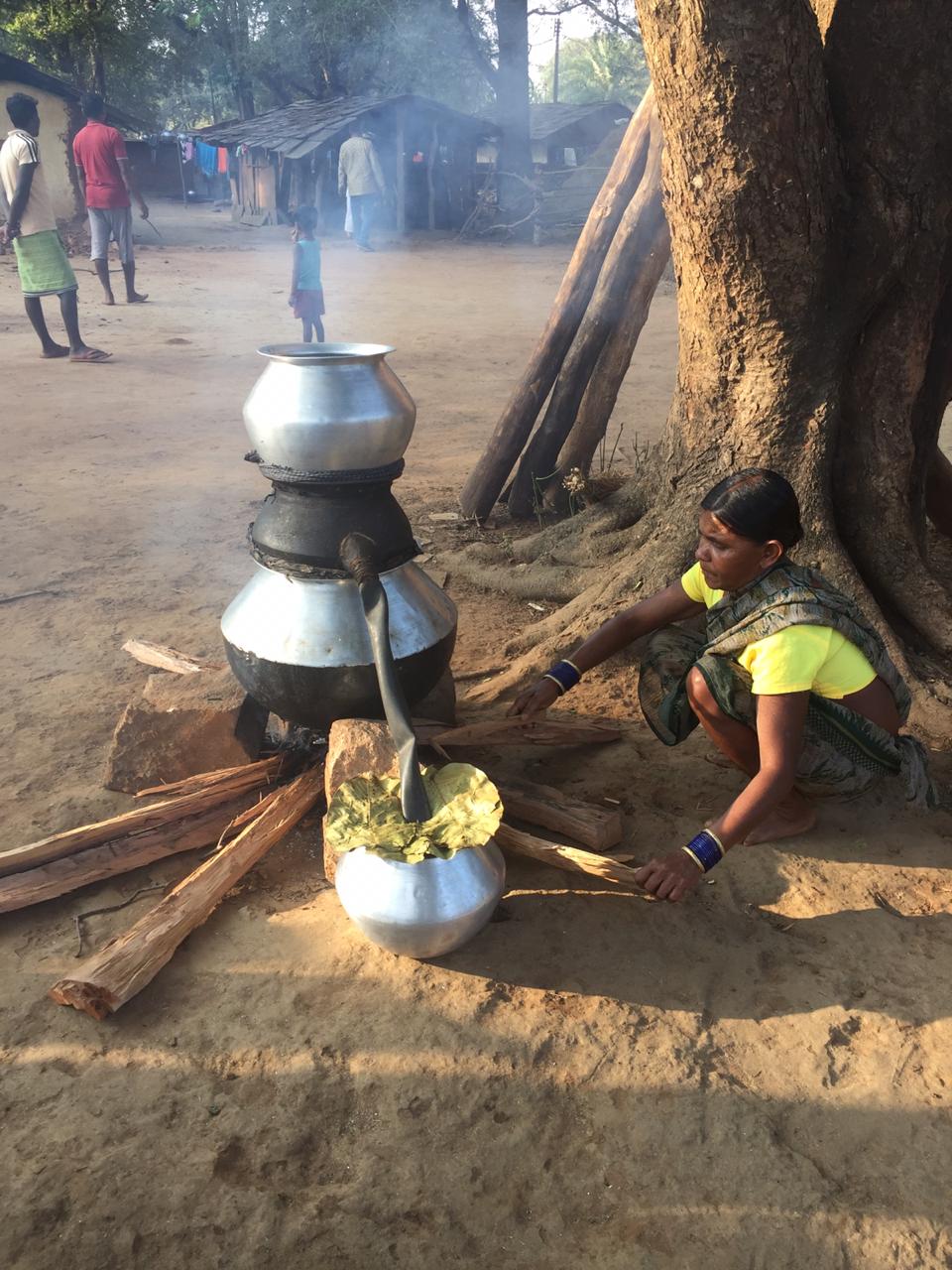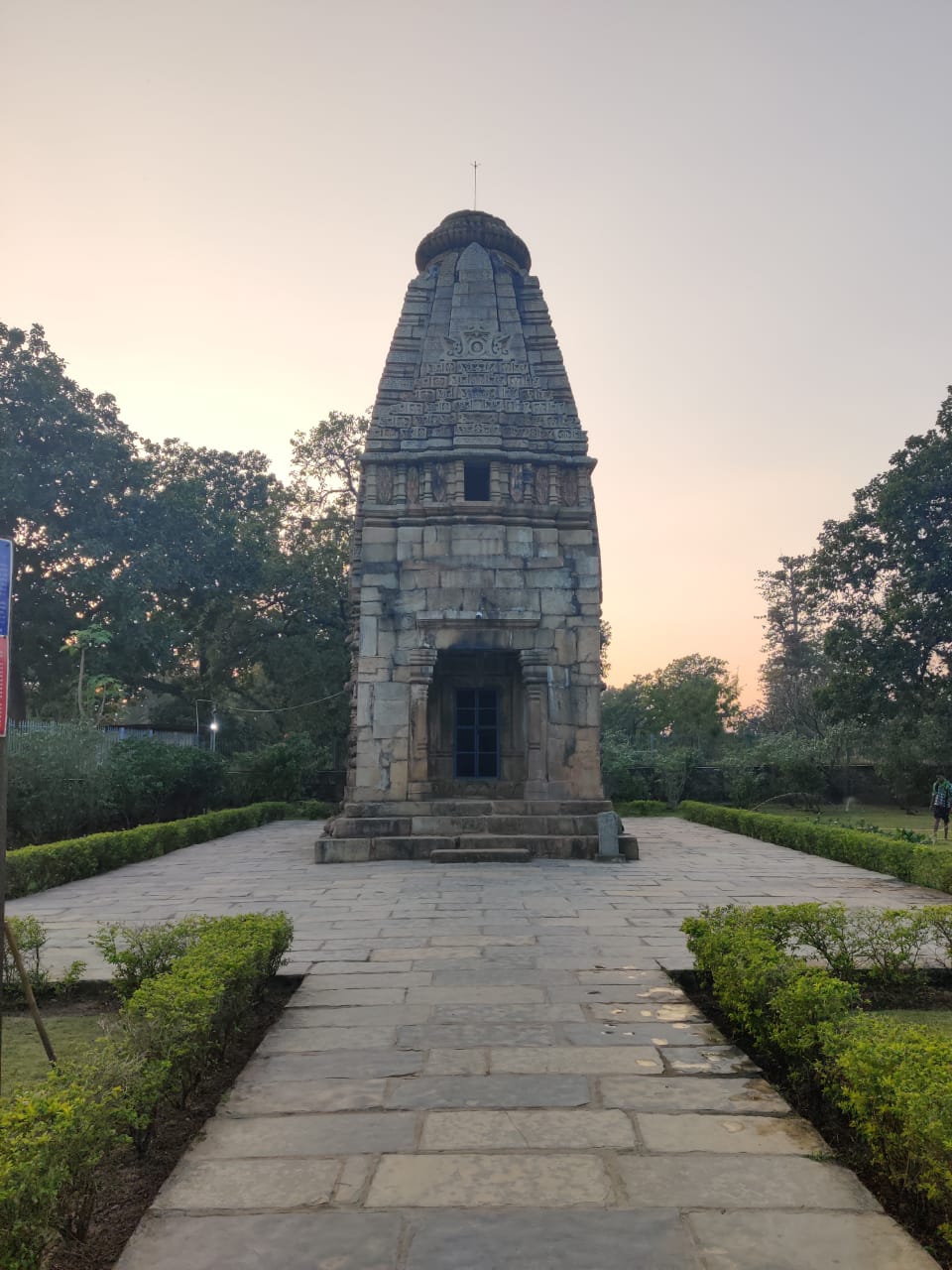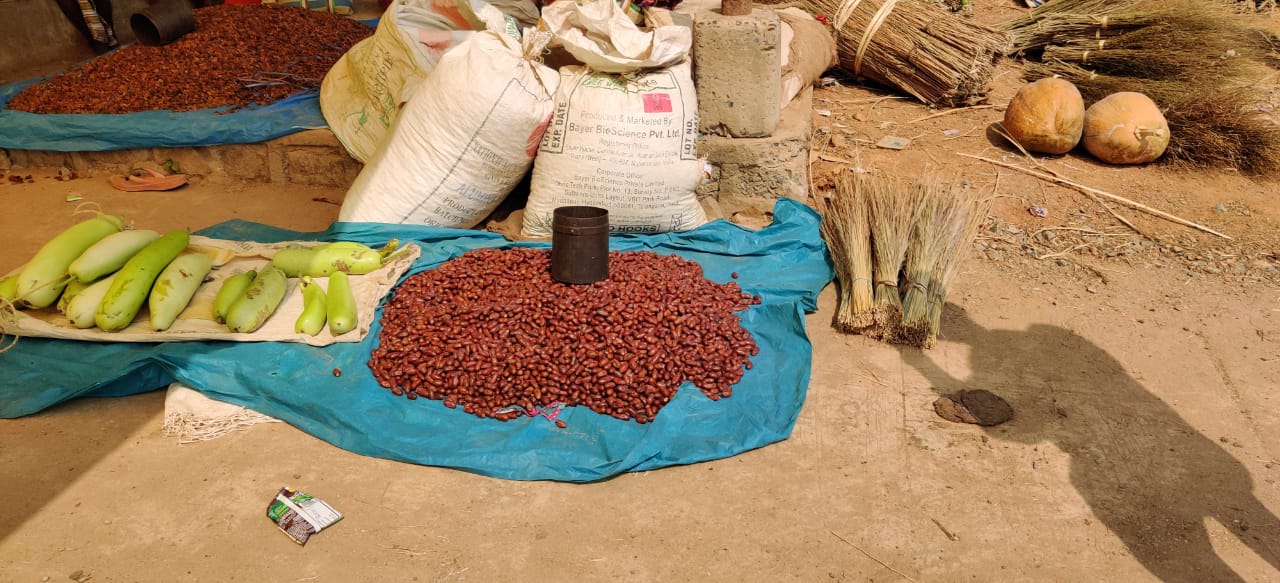There are some tribes who are more ubiquitous than others, with regional and local offshoots. For instance, the Gonds are scheduled tribes of Madhya Pradesh who live in Mandla, Chhindwara, Betul and Seoni districts of the state. Their many regional offshoots exist in other Central Indian states like Maharashtra, Chhatisgarh, Odisha and parts of Andhra Pradesh. The Gonds could have got their name from Khond, which means hill, or from Koh, which means cave, hence the names – Gond, Khond, Kond, Rajgond, Koitur, Khond, Khand. The Gond folk tradition is rich in art and craft and they are very fond of music and dance. Both men and women sing and dance to the energetic sound of instruments like the dholak, a double sided drum.
The Pardhan tribe is the official narrators of traditional folk stories for this community and they tattoo their bodies with stars, scorpions, flower, bird and animal patterns. The walls of their homes are painted with scenes inspired by nature – animals, birds, people and trees. These are drawn in red and black on a white background. They make colorful floor designs called rangoli and beautiful pottery, baskets and other crafts, woodcarving is another talent.
Like many other tribes, Gonds worship Baradeo who is also known as Shambu Mahadeo and Persa Pen. In imagery he is a lot like Shiva, and is usually with something between a spear and a trident. Baradeo oversees activities of lesser gods and is respected, but he does not receive fervent devotion, which is shown only to clan deities. Each Gond clan has its Persa Pen, who protects all clan members. The Persa Pen is essentially good but can be dangerous and violent. Many Gonds believe that when a pardhan (bard) plays his fiddle, the deity’s fierce powers can be controlled. Each village has its village-guardian and village-mother that are worshipped when villagers celebrate regular festivities. Gonds also worship family and household gods, gods of the field and gods of cattle.
Deities such as Shitala Mata, goddess of smallpox, help ward off disease. Spirits are also believed to inhabit hills, rivers, lakes and trees. Village priests (devari) perform sacrifices and rituals for village festivals and the head of a household typically carries out family ceremonies. Clan priests (katora) tend the shrine and ritual objects of the clan’s Persa Pen. These priests also guard the sacred spear point and organize annual festivals. Most aspects of Gond life, from the greatest festivals to the building of a new cattle shed, are accompanied by sacrifice. Certain deities, especially the female ones demand chickens, goats and sometimes-male buffaloes. Every nine or twelve years, Gonds sacrifice a pig to the god Narayan Deo in an important ceremony known as the Laru Kaj (pig’s wedding). Other rituals also involve offerings of fruits, coconuts, flowers, colored powder and strings.
The majority of Gonds are Hindu. Some are animists, who believe that things in nature – trees, mountains and the sky have souls or consciousness and that a supernatural force animates the universe. They believe that their gods inhabit the forest and ancestor worship is an integral part of their religion. The villagers worship the village gods as a group and a priest conducts the rites. Idols of gods are often spear shaped, made of iron and are smeared with vermillion powder and kept at a special place called Deo-Khulla, the threshing floor of the gods. The Gond people were known to offer human sacrifices, especially to the goddesses Kali, Danteshwari and Bara Deo. This practice was abolished by the British in the late19th century but ritual of animal sacrifices are still preformed surreptitiously.
In the South, when a death occurs in the Kurumbas, the heads of males are shaved by the jatti. Both males and females dance to music and around the cot upon which the deceased rests. After all those who should attend have arrived, the corpse is carried to the burial ground. Members of the deceased brother-in-law’s patrician bear the prime responsibility for digging the grave, but the Kurumba present also assists. When all is ready, the body is placed in the grave so that it faces toward the north. The local Inula priest then gazes at a lamp and goes into a trance. A member of the bereaved family asks him if the death was natural or the result of sorcery. If natural, the grave is filled in the right way and if sorcery was the cause of death, elaborate ritual is performed. All the mourners then leave and the highlight in the ending of the seven days is the distribution of new clothing by the Kurumba to these relatives. As soon as possible after the funeral, preferably within a month, a stone is placed in the ancestral temple to give the deceased a place to stay. After pouring a little oil on the stone as part of a prayer ritual and leaving food and drink for the spirit of the departed, the relatives leave.
Once a year, all those who had a relative who died within the year participate in a final ceremony. At the nearby river or stream, rice gruel is poured over cloth, which is set adrift. In addition to honoring the spirits of those who died within the year, the Irula thereby honor all the ancestral spirits of the related patricians.
In some form or the other, the sacred grove as a point of worship is intrinsic to most tribal communities. Thus, for instance, in Odisha, sarna means grove and it usually denotes the sal tree, sacred to the religion, from which also derives sari dhorom or the religion of the sal tree. A large population of the Santhal and Mundas practice
Sarnaism, and worship Dharmesh, the God as the creator of the universe. Sarna temples are called Sarnasthal and can be found in villages, while worship can be performed in sacred groves where the entire community congregates and sings collectively. The ceremonies are usually performed with the active participation of village priests and their assistants.
In conclusion, it can be clearly maintained that the tribes are the simplest and most self-effacing amongst all our communities and have a unique culture and identity. There is a lot to learn from them – especially their frugality and devotion to nature. This makes them everlasting sentinels of sustainability for the planet.
Religion and magic are also the integral part of the tribal culture. Most of the tribes of central India are animist in nature. Besides, the worship of ancestral sprit is also in practice. Superstition and traditional beliefs are deeply rooted with their religious practices. It is a general belief among all the tribes of central India that everything what ever happening to them are either by the blessing or curse of the supernatural power or evil sprits. They used to worship their surrounding nature, hills, mountains, rivers and streams, trees, agricultural fields, animals etc as a deity for various purposes, like curing from diseases, protection from natural calamities and wild animals, prosperous life, good cultivation etc. Most of their rituals and worships are related either to their economy or to their daily life. Usually, the family or clan deities are worshipped by the head of the family or clan members but for the village level or tribe level worship they seek help of their Ojha or religious head. The service of witch doctor is rendered for curing from black magic. They never took the services of the Brahmins in any religious activities. There is a hierarchy found among the deities in most of the central Indian tribe.
For example, the deities of the Gond tribe. There are nine distinct groups of gods found among the Gonds. The Bada Deo or Maha-Dev (Pen) who is conventionally thought to be Shiva of the Hindu traditions is considered as the principal god of the Gond. Similarly, the Singhbonga (the Sun God) is the principal deity of the Santals, the Mundas and the Hos. Other deities of this tribe are Jahir era, Monika, Marangburu etc. The Juangs of Odisha believe in the supernatural power. The ‘Dharm deuta’ (sun god) is their supreme deity and the ‘Basuki mata’ (earth goddess) is his counterpart. In every ritual, the Juangs worship them. Tlrre ‘Rusi and, ‘Rusiani’ are considered as their mythical ancestors and remembered in each occasion.
Most of the tribes of Chotanagpur and its neighbouring areas believe in Sarna religion. The word Sarna is derived from the word Sar (arrow). The worship place of the tribes of Chotanagpur is known as Sarnasthal or Jahera which is nothing but a sacred grove, where a set of old Sarjom (Sal) trees exist. This Sarnasthal is usually, but not necessarily, present at a little distance of the village. In his first monumental work “Munda and their Country”, Rai Bahadur S.C. Roy (1912) has mentioned that “Although the greater portion of the primeval forest, in clearings of which the Munda villages were originally established, have since disappeared under the axe or under the jara-fire, many a Munda village still retain a portion or portions of the original forest to serve as Sarnas or sacred groves. In some Mundari villages, only a small clump of ancient trees now represent the original forest and serves as the village-Sarna. These sarnas are the only temples the Mundas know. Here the village- gods reside, and are periodically worshipped and propitiated with sacrifices”. To describe Sarna religion, Dalton and Dehon have mentioned that it is composite in nature but as per Roy (1918:1) it is an organized system of spiritism set on a background of vague animism, which institutionally recognizes the deities and ancestral spirits.
But now-a-days, because of the impact of various agencies, like Christianity, Hinduisation, globalization, Industrialization etc some of the tribal people are bending towards the other religion of wonder pantheon. Some of them have completely assimilated with their new religion and some are partly adopted the new religious traits and parallel following both the religions. Because of this syncretism, they are only worshipping few traditional deities. For example, some of the Hos, the Mundas, the Santals, the Gonds who are partly Hinduized and worshipping their traditional deities as also worshipping the Hindu deities. It is same in the case of those tribals of central India those who have partly adopted Christianity.






